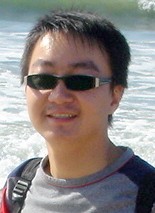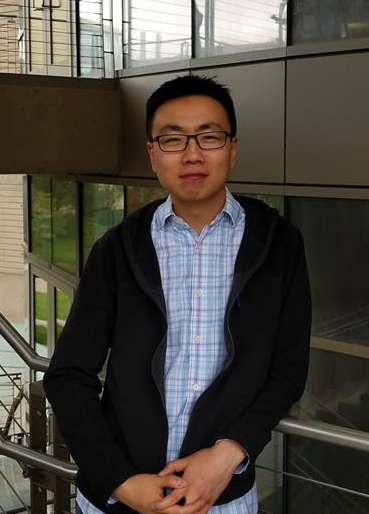Yuan Feng (Ge Group) and Andy Yang (Law Group)
1:00pm
Yuan Feng, Assistant Specialist, UC Irvine, Ge Group
Title: General noise suppression scheme with reference detection in heterodyne-detected spectroscopy and microscopy
Abstract: Heterodyne detection is a widely used technique in optical spectroscopy because it can preserve the signal phase information and achieve a high signal-to-noise ratio (SNR) even for weak signals. However, the intensity fluctuations of the local oscillator can often dominate the total noise in heterodyne detection and severely deteriorate the final SNR. Therefore, local-oscillator noise reduction is critical in all heterodyne spectroscopies and microscopies. Many different efforts are already made to solve this issue, including lock-in detection, Fourier filtering and reference detection. In this talk, I will present our recently developed multi-channel referencing scheme which can suppress laser noise to the signal-detector noise floor. This scheme is generally applicable to all heterodyne detection techniques and I will give some examples for different scenarios.
Bio: Yuan is an assistant specialist in Prof. Ge's group of UC Irvine. His research focused on the study of molecular conformation and dynamics in the condensed phases using ultrafast vibrational spectroscopy, and instrumental improvement for nonlinear optical spectroscopy.

----------------------------------------------------------------------------------------------------------------------------------------------------------------------------------------------------
1:30pm
ANDY YANG, Graduate Student | LAW GROUP
Department of Chemistry - University of California, Irvine
Title: ALD supported plasmon enhanced photocatalysis for solar fuels production
Abstract: My research focuses on harnessing solar energy for converting abundant materials to fuels and valuable chemicals through plasmonic photocatalyst. Having a tunable absorption cross section, plasmons can be engineered to capture the solar spectrum and improve efficiency. Coupling energetic carriers with catalytic materials, a plasmon enhanced photocatalyst will be able to generate hydrogen and produce ammonia from abundant starting material. Using atomic layer deposition, gold nanoparticles are overcoated with TiO2 catalytic overlayer to facilitate chemical transformation. This presentation will cover synthesis, characterization and use of these plasmonic photocatalysts.
Bio: Andy Yang is currently a second year graduate student pursuing a Ph.D in Chemistry at UCI. He graduated University of California Davis with a BS in Physics and Chemistry. After leaving UC Davis and before joining UCI Irvine, he worked as a research associate conducting R&D for a biotech startup iAndy Yang is currently a first year graduate student pursuing a Ph.D in Chemistry at UCI. He graduated University of California Davis with a BS in Physics and Chemistry. After leaving UC Davis and before joining UCI Irvine, he worked as a research associate conducting R&D for a biotech startup in the Bay Area. Because of his interest in energy research and science, he has decided to pursue a Ph.D under the mentorship of Prof. Matt Law. His research emphasis is on plasmonic photocatalysis for ammonia production. The goal is to use light as the primary energy source for producing useful and valuable chemicals. n the Bay Area. Because of his interest in energy research and science, he has decided to pursue a Ph.D under the mentorship of Prof. Matt Law. His research emphasis is on plasmonic catalysis towards solar fuel production. The goal is to use light as the primary energy source for producing valuable chemicals.



